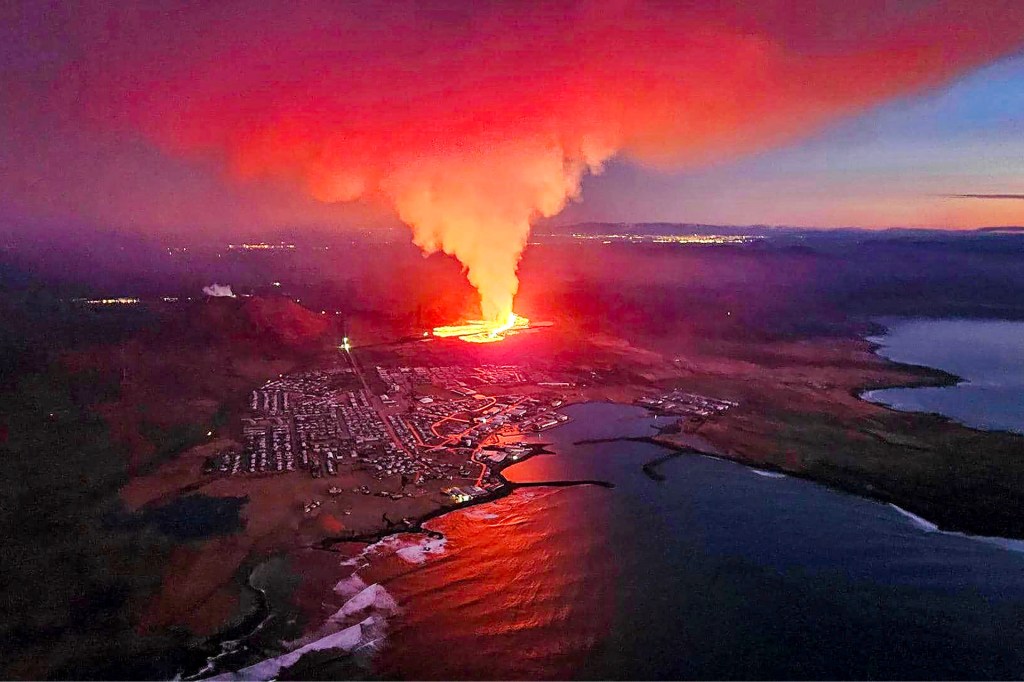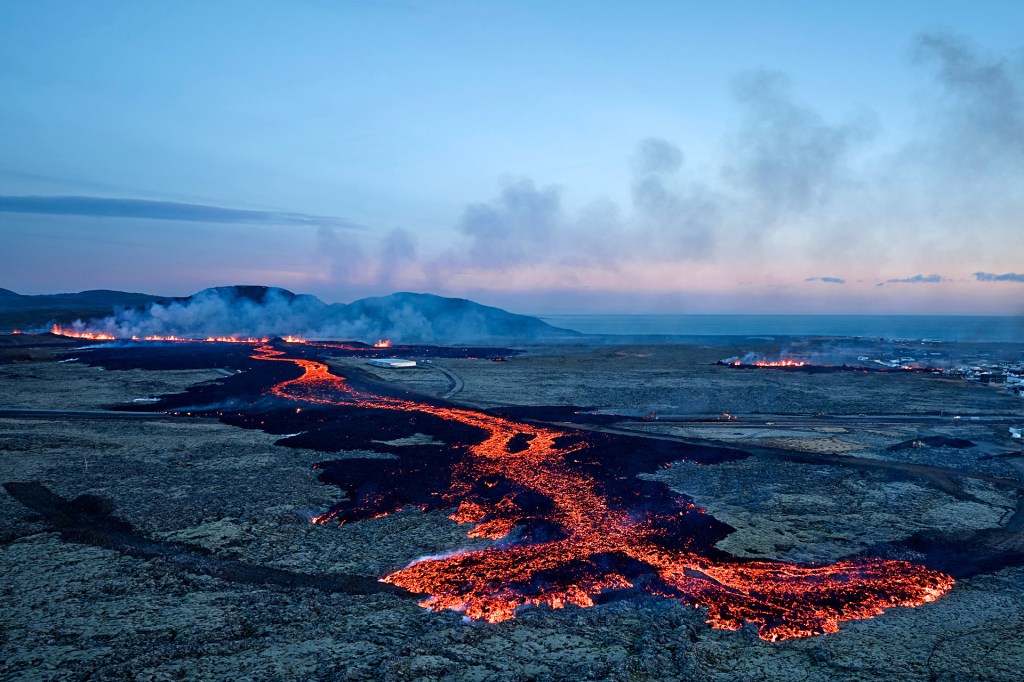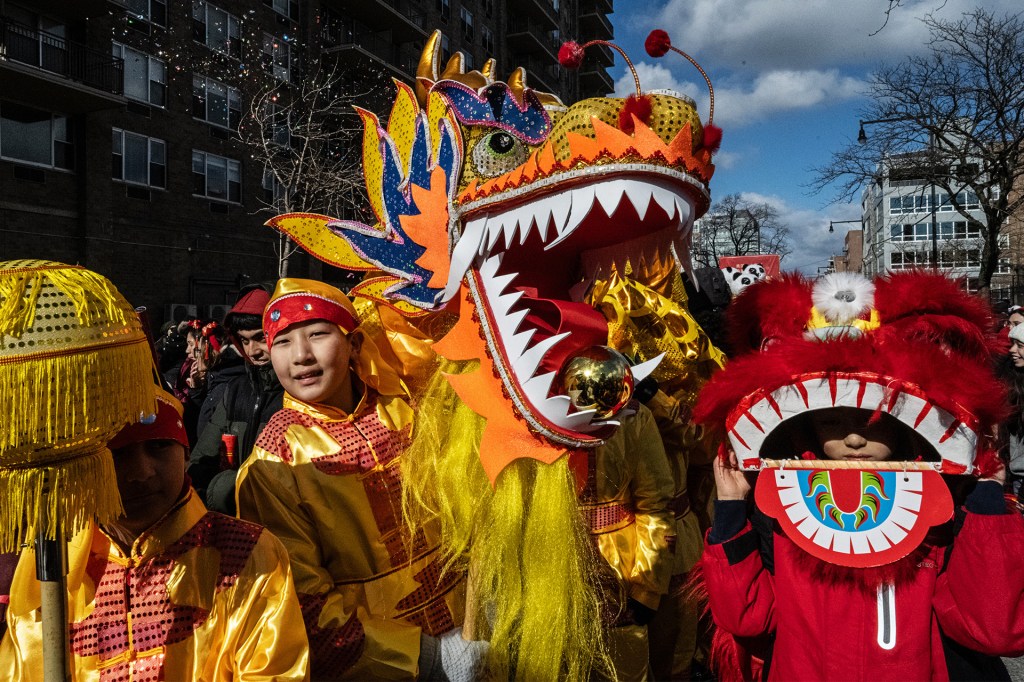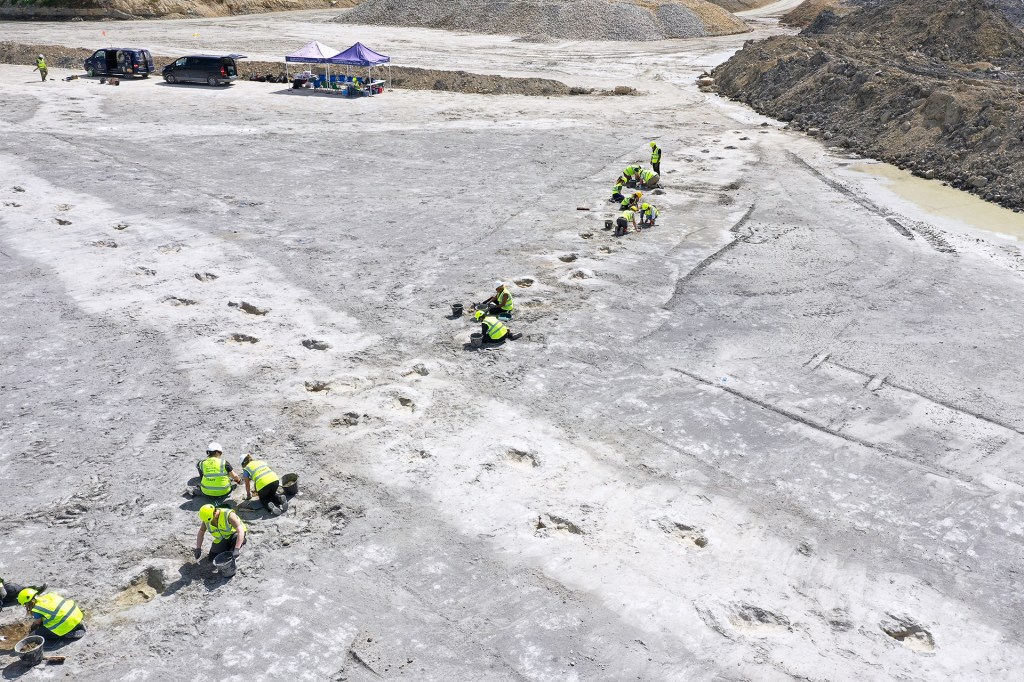A Volcano Erupts

A volcano on Iceland’s Reykjanes Peninsula erupted on the morning of January 14. It sent molten lava into Grindavík, a fishing town. Several houses caught fire. No deaths were reported, but many people were forced from their homes. While staying with friends or family, these people are waiting for a long-term living solution from the Icelandic government.
The lava has caused major damage. It severed the pipes that took hot water into town from the nearby power station. Homes have no heat, and are too cold to live in, given the freezing temperatures at this time of year.
The eruption is Iceland’s fifth in three years, and the second in less than a month. Emergency workers have been building defensive walls around the town, but these were not yet complete. Iceland’s prime minister, Katrín Jakobsdóttir, says the barriers were “serving their purpose” by redirecting the flow of lava. But lava spewing from a second crack in the ground made its way around the barriers and into the town.
Robin Andrews, a journalist and volcanologist, spoke to the BBC. “What can be said with certainty is that it’s an extremely perilous . . . situation,” he said.

LAVA RIVER Lava flows near the town of Reykjanes, damaging buildings and infrastructure.
HALLDOR KOLBEINS—AFP/GETTY IMAGESStop & Think! Why do news organizations cover natural disasters? What information about them is most important for people to know?












